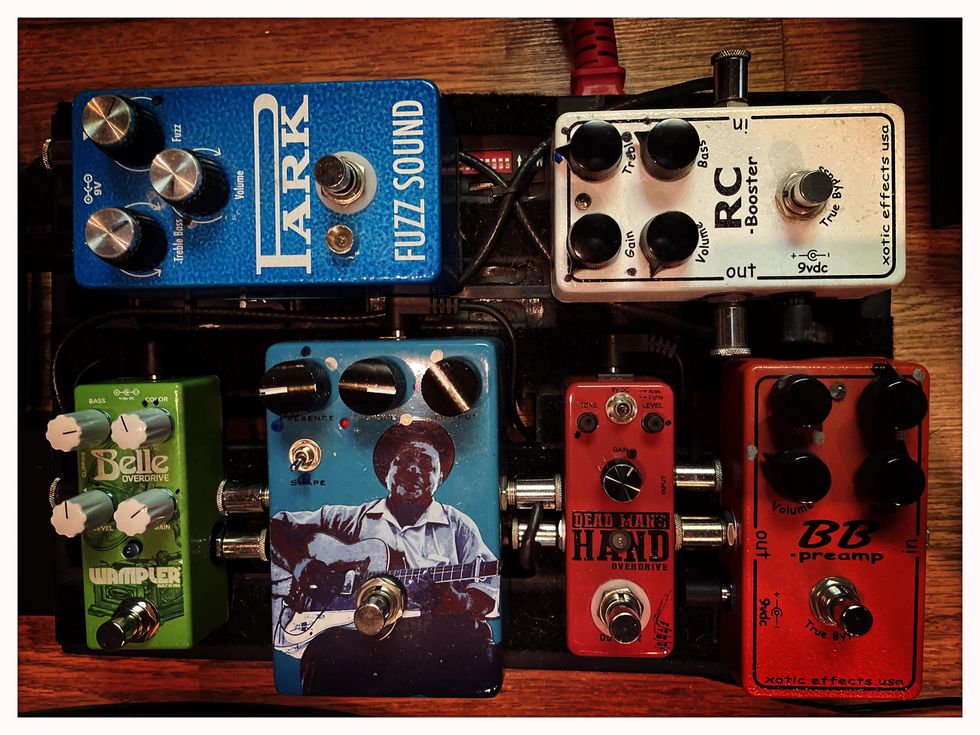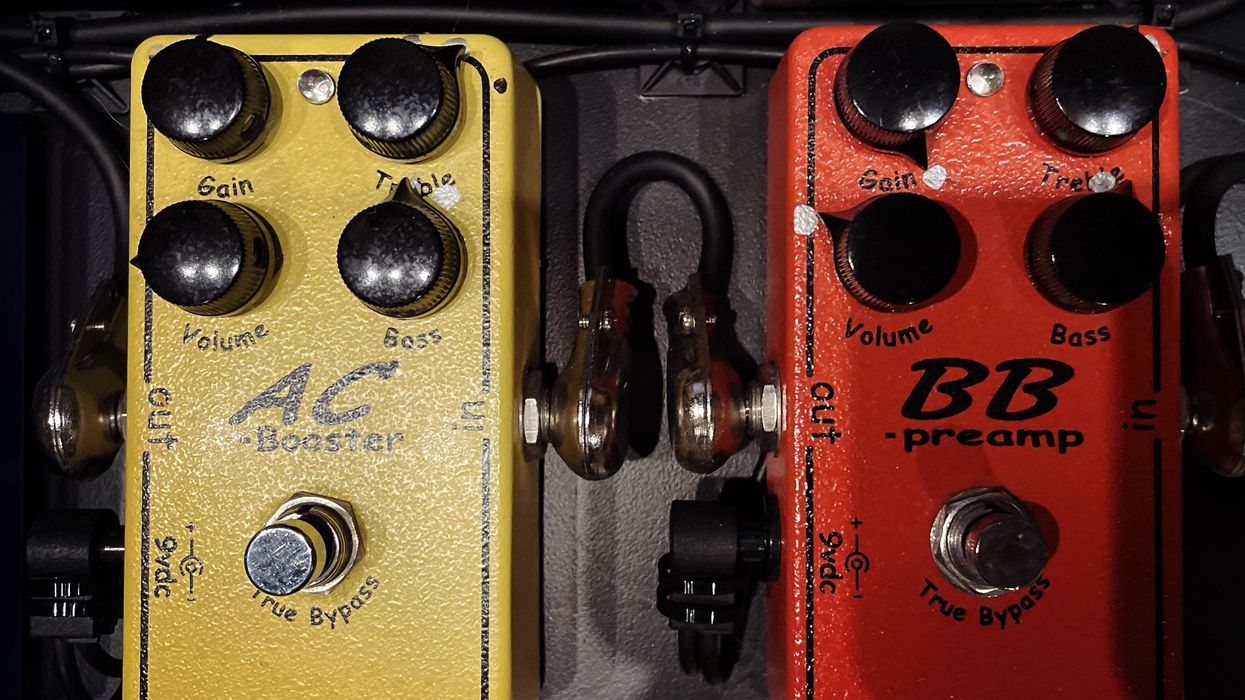Hello and welcome back to another session at the Dojo! This time, I'd like to explain the concept of gain staging using two (or more) overdrive/distortion pedals in series (one after another) to get more complex and saturated distortion tones for your recordings. Let's get to it!
Gain staging is an audio engineering term that refers to setting your input levels and routing to maximize the signal-to-noise ratio levels relative to the preamp, the volume fader, and the inherent headroom of the system. For guitarists, at its most basic this means using the aforementioned overdrive pedals in series to get complex and saturated distortion tones.
However, if you enjoy your hearing, your bandmates, your significant others, and cordial relations with your fans and neighbors, blasting your 100-watt Super Lead should be reserved for the stadium and not the club gigs. Thankfully, most high-gain amps these days have a master volume to help, but sometimes you just need more or, more importantly, you want different flavors of distortion. This becomes particularly important when recording multiple guitar takes. You can even build a distortion-oriented pedalboard specifically for your recording adventures, as I have.
In our never-ending quest for better and bigger distortion, we guitarists have never shied away from experimentation—from slicing speaker cones (not recommended) to slaving one amp into another via load boxes, which is a subject for another Dojo. Usually, bigger distortion means louder volume, especially if you're getting your distortion solely from your amp. When you crank your amp up to maximum volume, you can potentially get three types of distortion—preamp, power tube, and speaker. This is one of the reasons vintage Marshall amps sound so good when they are dimed, with every knob all the way up straight across the faceplate.
Remember that the point is to create gnarly tones that will still retain enough detail and character to punch through in a recording's mix.
By gain staging overdrive and distortion pedals in series, you can spice up your main distortion tone or create new tones altogether. You'll be able to achieve these at lower volumes, which can pay off in more nuanced sounds. I've found that overdrive pedals offer the most flexibility. The main reason is because of their soft-clipping circuit designs. There's a huge amount of tonal variation and possibilities here, because these pedals don't really ever go into "nuke" territory. Heavy overdrive and fuzz pedals, on the other hand, have hard-clipping circuit designs and serious amounts of distortion. You may find that you will reach a law of diminishing tone returns very quickly if you just use these types of pedals. Try it for yourself and see what inspires your creativity, but remember that the point is to create gnarly tones that will still retain enough detail and character to punch through a mix.
Try experimenting with the many different types of overdrives and distortion pedals on the market, using my guidelines below to get started:
- Set the output volume of each pedal to match the level of your guitar when bypassed.
- Layout your pedals in order of overdrive capabilities, from least to greatest. Experiment with their settings and record them so you can really hear the differences when listening to playback. What your ears hear as you play may sound different on "tape."
- Reverse the order, record, and listen to the differences. For example, I really love Xotic Effects' BB Preamp going into their AC Booster [Photo1]. These pedals sound great when gain-staged together. Typically, I set the gain on the BB Preamp at 5 o'clock (full) and plug it into the AC Booster with its gain at 11 o'clock.
- If you have a 2-channel amp (or a gain switch), listen to and record the pedals in both your clean and overdrive channel, individually.
- Add a fuzz pedal after the overdrives and play with the amount of fuzz. Why not?
- Try adding a clean boost pedal as the last pedal to drive your amp even harder.

Photo 2
If you have more than two overdrive/distortion pedals, repeat the process and then make a mini pedalboard in the order you like. Photo 2 shows a pedalboard I've put together consisting of four overdrives (bottom row), one clean boost, and a fuzz pedal. The signal flow is from bottom left to top right. This gives me flexibility in choosing which pedals I want to cascade into the others. For example, I might like running pedal 1 into pedal 3, pedal 2 into 3, but not pedal 3 into 1—hence the layout order.
One final word of advice: Be sure to record all the possible combinations, because it's very easy to lose your point of reference when listening to overdrives for extended periods of time. Having them recorded in your DAW will allow you to take breaks and really know which combinations inspire you the most and how they sound on playback.
Until next time, keep experimenting! Namaste.

















